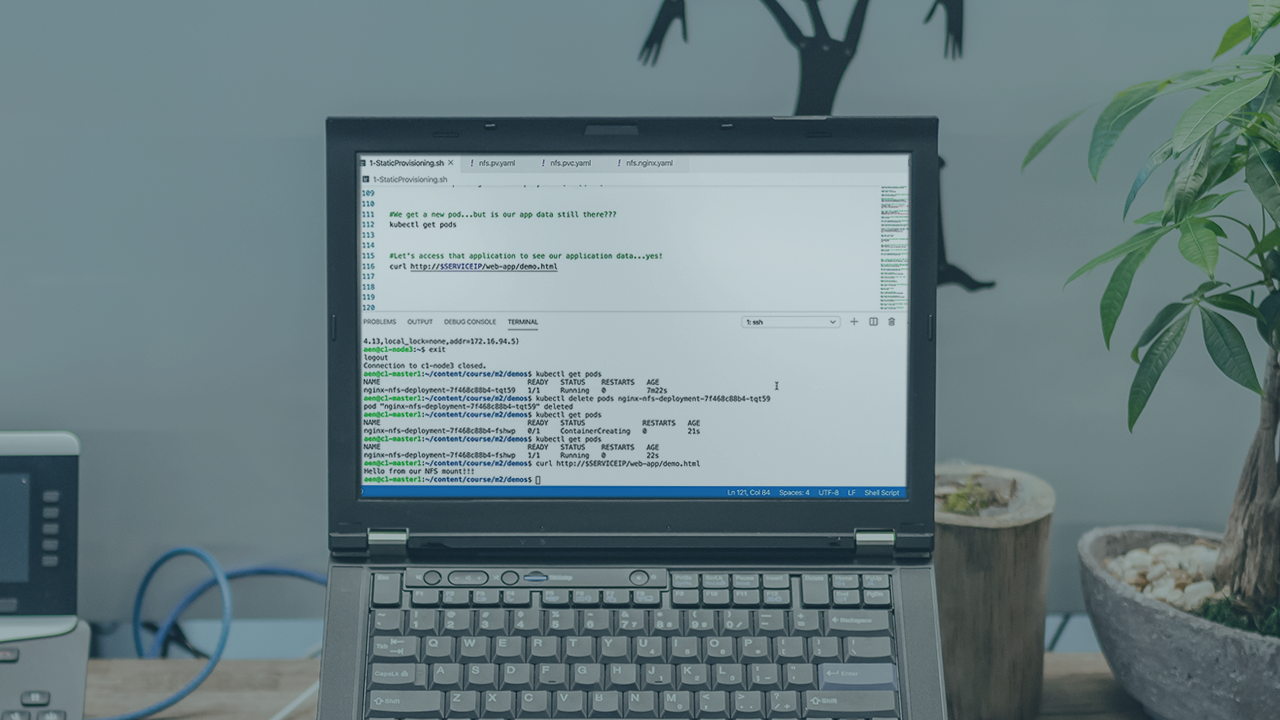- Course
Configuring and Managing Kubernetes Storage and Scheduling
This course teaches you how to decouple state and configuration from your Pod's lifecycle using persistent storage and configuration as data as well as how to schedule Pods to Nodes in your Kubernetes cluster.

- Course
Configuring and Managing Kubernetes Storage and Scheduling
This course teaches you how to decouple state and configuration from your Pod's lifecycle using persistent storage and configuration as data as well as how to schedule Pods to Nodes in your Kubernetes cluster.
Get started today
Access this course and other top-rated tech content with one of our business plans.
Try this course for free
Access this course and other top-rated tech content with one of our individual plans.
This course is included in the libraries shown below:
- Core Tech
What you'll learn
At the core of being a Kubernetes Administrator is a thorough knowledge of storage, Pod configuration, and Pod Scheduling. In this course, Configuring and Managing Kubernetes Storage and Scheduling, you will take a deep dive into these cluster administration topics. First, you will learn how to configure persistent storage for your Pods. Next, you will explore using configuration as data to configure your Pod-based applications. Finally, you will discover how Pod scheduling works and how to influence scheduling in your cluster. When you are finished with this course, you will have a foundational knowledge of storage and scheduling that will help you as you move forward to being a skilled Kubernetes cluster Administrator. This course can also help you prepare for your Certified Kubernetes Administrator (CKA) certification.
Configuring and Managing Kubernetes Storage and Scheduling
-
Introduction, Course and Module Overview | 1m 46s
-
Persistent Storage in Containers and Kubernetes | 3m 23s
-
Volumes, Persistent Volumes, and Persistent Volume Claims | 5m 45s
-
Controlling Persistent Volume Access with Access Modes | 1m 39s
-
Static Provisioning and Storage Lifecycle | 3m 54s
-
Defining a Persistent Volume | 1m 49s
-
Defining a Persistent Volume Claim | 4m 13s
-
Lab Environment Overview | 1m 41s
-
Demo: Storage Server Overview | 4m 4s
-
Demo: Static Provisioning Persistent Volumes | 4m 59s
-
Demo: Using a Persistent Volume in a Pod | 7m 20s
-
Demo: Controlling Persistent Volume Access with Access Modes and Reclaim Policy | 5m 3s
-
Storage Classes and Dynamic Provisioning Workflow | 3m 35s
-
Demo: Dynamic Provisioning Volumes | 5m 23s
-
Demo: Defining a Custom StorageClass | 3m 31s
-
Module Review and What's Next! | 42s

